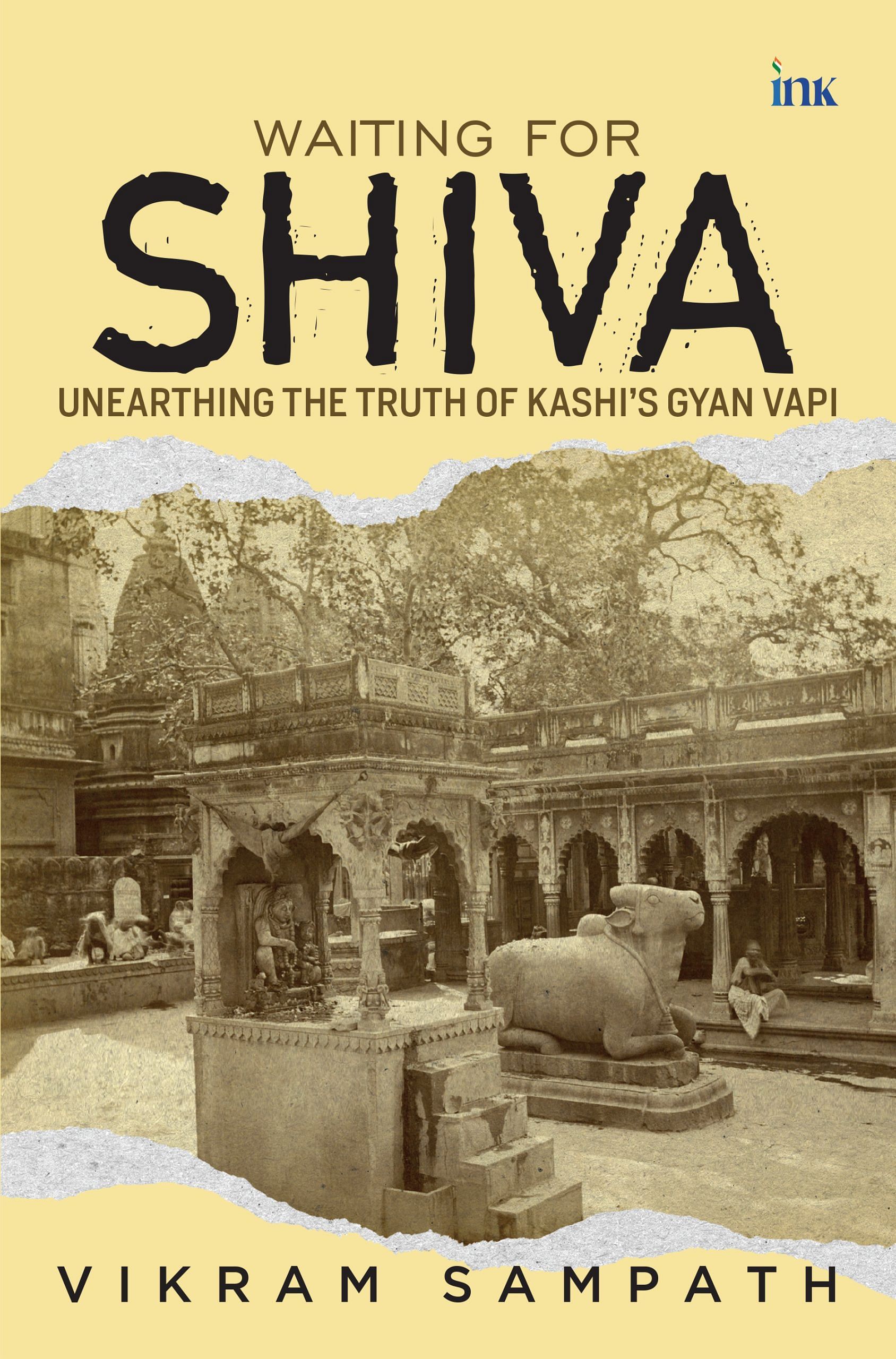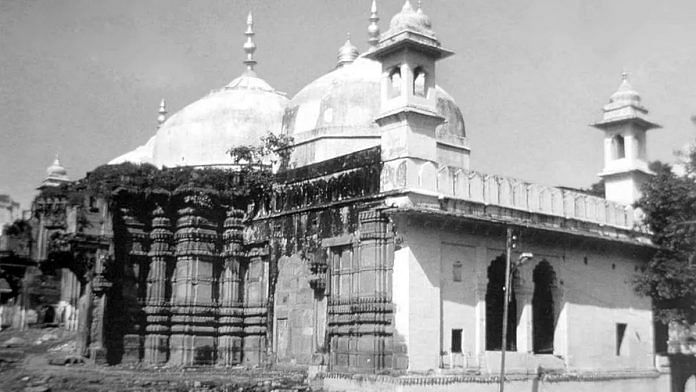Far from reclaiming or beautifying the sacred space, a more perverse attempt that followed in independent India was the justification of the barbaric demolition of the Vishwanath temple by Aurangzeb.
Apologists of the ruling Congress party and a consortium of ideologically driven Marxist historians spun fantastic yarns that are truly baffling. It began with Congress leader Dr. Pattabhi Sitharamayya and was later embellished by Bishambhar Nath Pande, a celebrated Gandhian who held several positions including the governorship of Odisha, winning the Padma Shri and Indira Gandhi Award for National Integration.
The crux of this fairy tale by Pande is as follows. Aurangzeb was supposedly on an expedition to Bengal and en route he passed by Varanasi. There were several Hindu rajas in his entourage who requested a day’s halt at the holy city so that their queens could go and worship at the Vishwanath temple. Being the ever-tolerant, large-hearted, and secular monarch that he was, Aurangzeb is supposed to have readily agreed to the proposal. Of course, why the Rajas themselves did not wish to have a darshan of Vishwanath and simply left their queens to do this task slips the logic of these spin doctors. The Ranis are supposed to have gone to the temple in their palanquins, bathed in the Ganga, paid their obeisance to Vishwanath and returned. But it was discovered that all but one, the Rani of Kutch, had returned. A thorough search of the temple precincts was made, but she was nowhere to be found. When the golden-hearted Aurangzeb heard of this, he was livid and sent his soldiers to search for the missing queen. Again, why royalty was not sent in the first place without adequate security is a small detail missing in this beautiful tale. The soldiers found that in the temple there was an idol of Ganesh, which was placed on a sliding wall, and when they moved it, there appeared a flight of steps that led them to a dark, underground cellar. To their horror, the soldiers discovered the missing Rani sitting there weeping inconsolably and all her ornaments had vanished. This cellar where the queen was found was allegedly right under the Vishwanath shrine. Upon enquiry, she revealed that she had been mugged of all her jewellery by some of the priests of the temple. This was a common practice in that shrine where the priests routinely indulged in looting wealthy pilgrims. The Hindu Rajas who heard of this were naturally enraged and violently protested before Aurangzeb.
Upon hearing this, the kind emperor, who otherwise would not have committed the act, followed the advice of his Hindu kings and not his own wish, and to teach the wicked Brahmins a lesson, had the Kashi Vishwanath temple demolished. Again, the logic that the storyteller skips here is that the Brahmins did not own that temple; hence to punish them the temple need not have been destroyed, but they could have been apprehended and hanged for the alleged heinous act.
The justification of demolishing temples to quell a rebellious group or some perceived deviant behaviour falls flat when a rebel is housed in a mosque. In Aurangzeb’s case too, a Sufi dissident called Shaikh Muhammadi was persecuted by the emperor for what he considered dubious religious doctrines that the latter propagated. Muhammadi took shelter in a mosque. Aurangzeb managed to get the man arrested but did not demolish the mosque in retribution. As scholar Konrad Elst writes: ‘This incident plainly contradicts the secularist claim that if any temple destructions took place at all, the reason was nonreligious, viz. the suppression of rebellion located in the temples affected. As per [Prof. Richard] Eaton’s own data, we find that intrigues and rebellions involving mosques never led to the destruction of the mosque.’
One does not know which other queen had been similarly outraged before the ‘secular’ Aurangzeb destroyed Mathura and numerous other Hindu shrines. Also, in none of the extant documents or biographies of Aurangzeb is there ever any mention of his journey to Bengal. He sent his army there but never undertook the expedition in person. The worthies spinning such fantastic gobbledygook regarding this fantastic reason for his demolition of the Kashi Vishwanath temple make no mention of the date or year or source of such a perverse distortion.
In his book Islam and Indian Culture, Pande states that Dr. P.L. Gupta, former curator of Patna Museum, has also corroborated this incident of the Rani being molested at the temple. As scholar Koenrad Elst writes: ‘But if this P.L. Gupta had anything to add in his capacity of historian, B.N. Pande would not have failed to reproduce it. Instead, the more likely explanation is that Gupta simply had read the same book (quite popular in Gandhian circles after its publication in 1946) which Pande quoted as his source.’
When one traces the source of Pande’s wild story, one gets to Dr. Pattabhi Sitaramayya’s book Feathers and Stones, the book that Elst mentions above. Sitaramayya had served as president of the Congress party and also as governor of Madhya Pradesh. He was the chronicler of several books on the history of the Indian National Congress. For his narration of this fable on Kashi Vishwanath, he attributes the following sources:
This story of the Benares Masjid was given in a rare manuscript in Lucknow which was in the possession of a respected Mulla who had read it in the Ms [manuscript]. And who though he promised to look it up and give the Ms [manuscript] to a friend, to whom he had narrated the story, died without fulfilling his promise. The story is little known and the prejudice, we are told, against Aurangzeb persists.
It becomes clear to the reader how a story of some unnamed mullah quoting an unnamed manuscript termed as ‘rare,’ about which he shared with an unnamed friend, gets repeated so many times by those in positions of authority in the political and academic scene that it starts assuming a veneer of authenticity. Contemporary and authoritative sources of Aurangzeb’s times like Masir-i-Alamgiri are viewed with utter suspicion for alleged exaggeration of the emperor’s bigotry. But these unnamed, unknown manuscripts start assuming great importance and historical validity. Demonizing the Brahmin, undermining the Hindu faith, and glorifying and acting as apologists for Islamic bigots is a clear pattern one can see here.
This undocumented, unverified, and malicious propaganda then began to gain acceptability in the hallowed portals of academics and professional historians. Mentioning the same episode, Marxist historian Gargi Chakravartty couches it in her verbal sophistry: ‘Much has been said about Aurangzeb’s demolition order of Vishwanath temple at Banaras. But documentary evidence gives a new dimension to the whole episode.’ Another leading light of the Marxist bunch of historians hailing from the Jawaharlal Nehru University, K.N. Panikkar, spun another theory: ‘The destruction of the temple at Banaras also had political motives. It appears that a nexus between the Sufi rebels and the pandits of the temple existed and it was primarily to smash this nexus that Aurangzeb ordered action against the temple.’ It ‘appears’ to the ‘eminent’ historian here that such a nexus might have existed—not one source is attributed to making this atrocious and silly claim.
In this kind of vitiated and toxic environment that was rife with anti-Hindu propaganda, even expecting the emancipation of the Kashi Vishwanath temple was a far-fetched, nay, impossible dream.
 This excerpt from Waiting for Shiva: Unearthing the Truth of Kashi’s Gyan Vapi by Vikram Sampath has been published with permission from BluOne Ink publishers.
This excerpt from Waiting for Shiva: Unearthing the Truth of Kashi’s Gyan Vapi by Vikram Sampath has been published with permission from BluOne Ink publishers.




Sampath, yet again, leaving no stone unturned to equate Hinduism to Brahminism. And subtly brush all the brahmin atrocities under the carpet, because bigoted Islamists (honestly true) are way worse.
Everything is fine, accept addressing a known know-nothing-faux-intellectual Koenraad Elst, as a historian.
The tales of the historians who cooked stuff up, are also terrible. Way more tbh